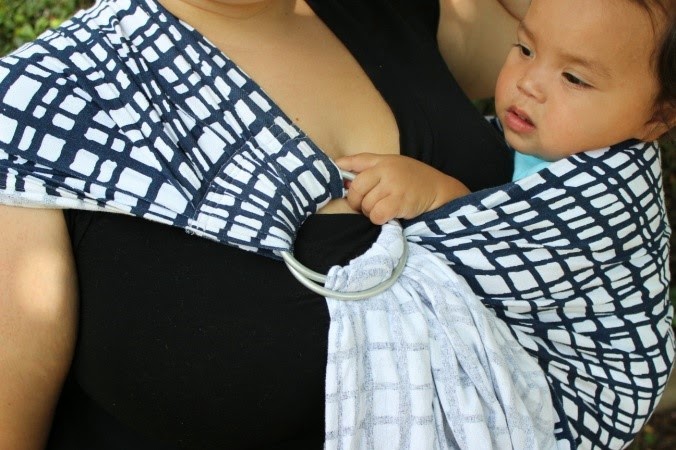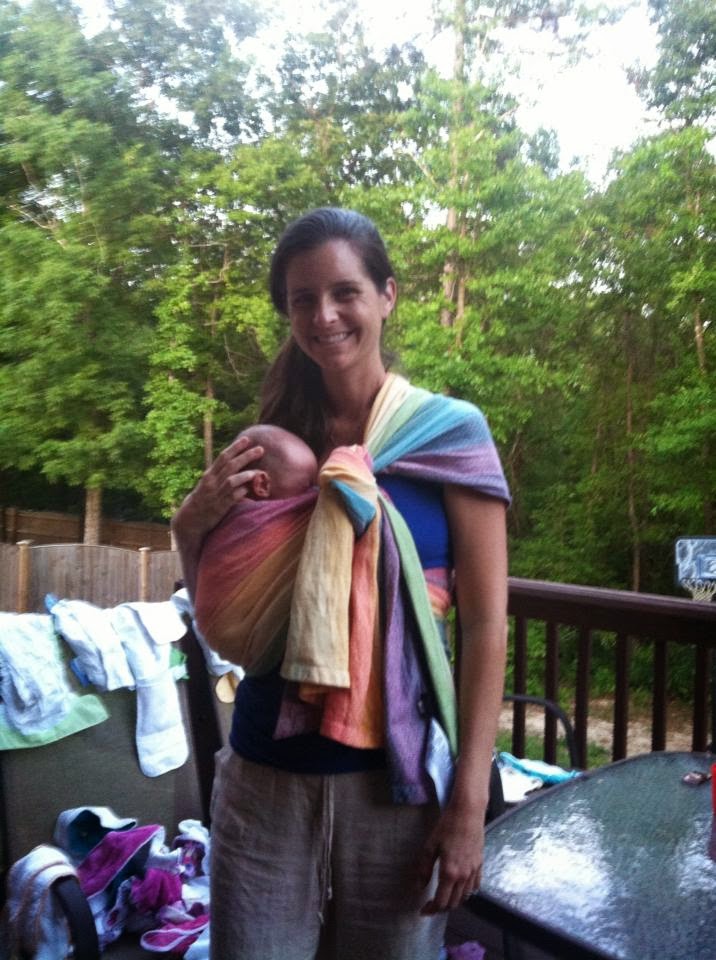Happy Blog Day!
 |
| Leader Chris, leading the invasion of Isle of Palms |
Today's post is a guest post written by Rachael, a local mom who has started making carriers for her own personal use. She's kind enough to write up a guest post detailing the ins and outs of DIY baby carriers.
Even if you don't plan on making your own carriers, I recommend reading this to get an idea of things to look for if you ever shop for carriers on Etsy. The next blog post will go into more detail on Etsy sellers, what to look for, and what it means to be a member of BCIA (which is optional, but open to all), and compliant with CPSIA regulations (which is NOT optional). It's important to pay attention to details like materials and construction when purchasing WAHM (work at home mom) made carriers. Many of the makers out there make quality, safe, products that we'd happily recommend. There are others, I think that perhaps just do not know better, or choose to not educate themselves, that are not worth buying. Educating yourself on DIY carriers gives any consumer at least a basic idea in what to look for in a carrier made by a WAHM/Etsy/Facebook only seller. In addition, it helps to research BCIA/CPSIA compliance and what to look for. These regulations are new, and many sellers are still working on full compliance.
DIY Babywearing
Caution: Continue on at your own
risk, DIY babywearing is both fun and addictive.
People DIY for different reasons. It can be for fun, because it's more affordable, or just because you want to. DIY is what really got me into babywearing. I made my first osnaburg wrap and fell in love with wearing and have not stopped since. Helping people wear their babies is very important to me and many other members of Babywearers of the Midlands, so this blog post is here to help you on your journey of DIY babywearing and hopefully answers some frequently asked questions.
People DIY for different reasons. It can be for fun, because it's more affordable, or just because you want to. DIY is what really got me into babywearing. I made my first osnaburg wrap and fell in love with wearing and have not stopped since. Helping people wear their babies is very important to me and many other members of Babywearers of the Midlands, so this blog post is here to help you on your journey of DIY babywearing and hopefully answers some frequently asked questions.
Regardless of your reason for
wanting to DIY, we can all agree that the number one thing is safety. Always
look over your carrier for wear and tear, especially in areas of frequent use
like where the fabric slides through the rings on a ring sling. Also, check all
seams and stitching for ripped or torn stitches before each use and after each
wash. For each DIY category I will list acceptable and non acceptable materials
because they can differ from carrier to carrier. You always want to use high
quality thread like Gutterman, and a brand new needle appropriate for your
fabric and sewing machine.
DIY stretchy wrap
 |
| Amber, using a DIY stretchy wrap |
These are quite possibly the easiest DIY carrier to make. Buy the fabric, cut the fabric to 30 inches wide, hem or serge the edges, which is optional because this knit won't unravel. These wraps are not safe for back carries. I personally did not make one because I had a Moby, but I hear good things from those who have made!
DIY Woven Wrap
Materials: Jaquard woven tablecloths (Mahogany brand are popular for
shorties), cotton gauze, 100% linen (not the thin stuff, the thick kind you use
for making pants), or Osnaburg found in the muslin section of most craft
stores.
Not acceptable: quilter's cotton, regular muslin, anything thin that
can pull apart easily.
These are also extremely easy to make if you can sew a straight line.
If it's a little crooked no one will notice, trust me. If you split a Mahogany
or any other 60X120 tablecloth, you only have to make one hem and you're done.
Any other material can be tricky because you have to buy more length than you'd
like to end up with. It will shrink after the initial wash. I don't like to
think too hard about it. If I want 5 yards (roughly a size 6 wrap) I buy 6
yards, or a little extra, because you can always cut it smaller. Fabric generally comes 45-60 inches wide on
the bolt so you will have to cut it down in width too. I prefer wider wraps so
I shoot for around 30 inches, but anywhere from 26-30 inches is normal. I
currently have three different DIY wraps. I have an osnaburg wrap dyed purple
and pink, a 100% linen wrap in a size 5, and a Mahogany table cloth shorty.
 |
| Mahogany Table Cloth (TC) shorty |
Ring Slings
Materials: Jaquard woven fabric (Mahogany tablecloths), 100% linen or
100% cotton woven tablecloths (Target tablecloths are popular in the DIY
babywearing world), osnaburg fabric, 100%
silk, or athletic mesh (water ring slings)
DON'T USE: quilters cotton, gauze, anything that rips or tears easily
or is thin.
 |
| Tablecloth Ring Sling |
Here's where I admit my tablecloth addiction. I ADORE my tablecloth
ring slings. I find myself buying tablecloths when I don't even have rings on
hand to make a sling. If I know you and you're pregnant, don't ask me about
babywearing because I will make you a ring sling. But really, ask me about it
because I want to make you a ring sling.
Mei Tai's, SSCs, and more.
 |
| Rachael and her DIY mei-tai |
There are a handful of good tutorials out there. I picked two I liked
and combined them together. I will list a few good ones below.
Aside from the materials, the next most important part of making a mei
tair or SSC is understanding which parts are weight bearing and need
reinforcement. The straps should be attached with x-box stitching and the
bottom should include multiple rows of stitching.
I really enjoy the mei tai
because you can have fun with it and customize it how you want.
This is the first mei tai I made. It's duck canvas for the body and straps with a decorative quilters cotton panel on the front, with a fleece lining to make it soft and snuggly for baby. We rocked this thing all winter long.
Hobo Mama's mei tai tutorial http://www.hobomama.com/2012/03/how-to-sew-mei-tai-baby-carrier.html
You're Sew Crafty's mei tai tutorial. Shows a contoured waist, straight
waist, and wrap straps. http://youre-sew-crafty.blogspot.com/2012/12/table-cloth-mei-tai-tcmt.html
Resources
If you have any questions about DIYing your own carrier please do not
hesitate to ask us at Babywears of the Midlands, but you can also find valuable
information at:
DIY babywearing facebook page for info about all things DIY.
Dyed baby carriers facebook page for info about dying your own
carriers.
Thanks for reading this blog post. Happy babywearing!



































